06:08, 24/09/2023
The first color photos capturing the land and people of the Central Highlands were taken by photographer Charles Lemire more than 100 years ago.
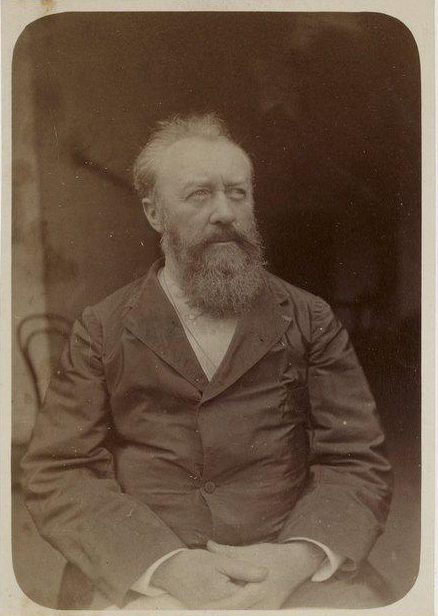 |
| Portrait of Charles Lemire. Photo : National Library of France |
Charles Lemire (1839 - 1912) was a minister working for the French colonial government. From 1886 to 1888, he was appointed French minister in Quy Nhon. In 1891, Lemire was French minister in Touranre ( Da Nang ) and Faifo (Hoi An). He was the first person to have the great contribution in forming the idea of building the Champa Cultural Museum. In 1892, Lemire transported 50 Champa sculptures to Touranre Park; then, he continued to collect and add to the collection up to 90 Champa sculptures. This park is also located at the location where the Cham Sculpture Museum was later built. In 1893, Lemire proposed to the colonial government officials about building a museum to preserve the sculptures in order to better preserve them.
In addition to his main job, Lemire is also an amateur photographer specializing in taking pictures of Cham architecture and sculptures in the Central region. While serving as a consul in Quy Nhon, he took many pictures of Champa architecture in Binh Dinh such as Banh It tower, Doi tower, Duong Long tower (Ivory tower), Canh Tien tower, Binh Lam tower, Phu Thien tower. Doi tower (Kiams tower), Banh It tower (Silver tower) taken by Lemire in 1888 are considered the oldest pictures of Champa architecture in Central Vietnam. Right at Tourane Park, he took many panoramic pictures of the arrangement and placement of statues and close-ups of some statues, especially the picture of parts of Tra Kieu altar (a national treasure) that he had the merit of bringing here.
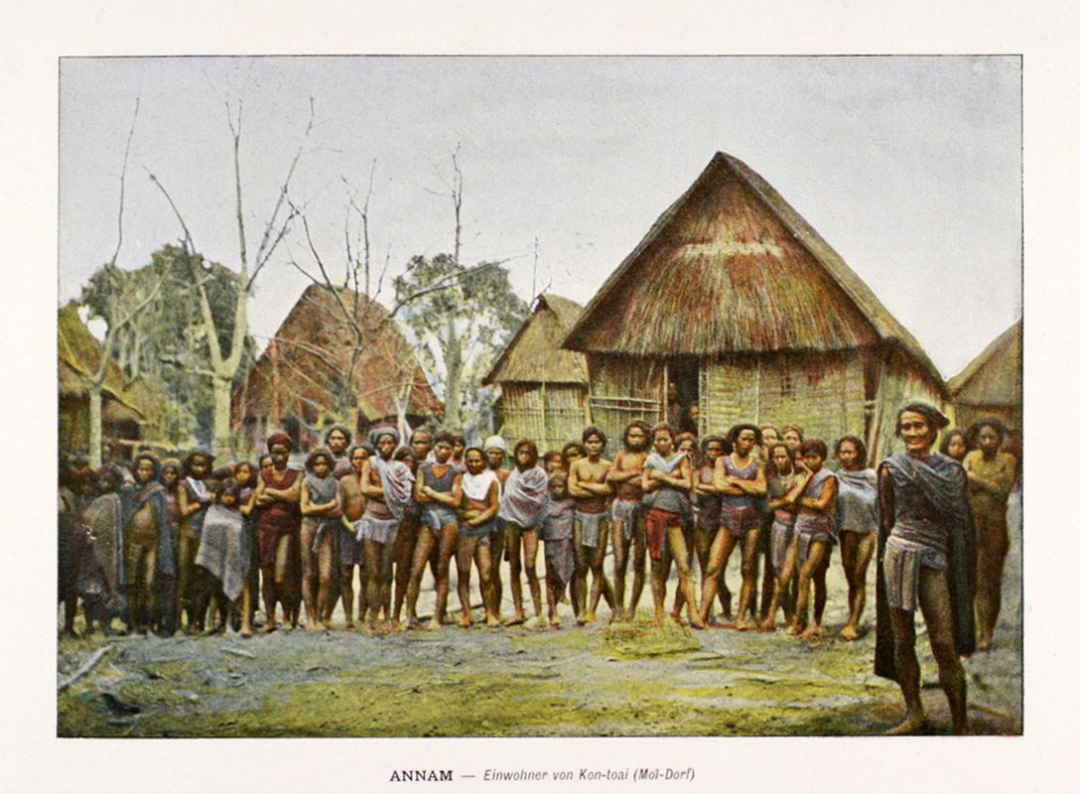 |
| Traditional houses of the ethnic groups in the Northern Central Highlands. Photo: Charles Lemire |
In the late 19th and early 20th centuries, Charles Lemire came to the Central Highlands and took some valuable documentary photos of this land. Compared to the collection of photos of Cham towers and sculptures in the Central region, his photos of the Central Highlands were quite modest. Some of his typical photos of this land include the architecture of communal houses, the festival costumes of a tribe in the North of the Central Highlands, domesticated elephants... However, it is worth mentioning that these are the first color photos of the Central Highlands. They were collected from a number of different publications about Indochina, published in France around 1910.
The typical photo is a photo of a large group of people in Kon Tum (captioned in the photo as Kon-toai). In the photo, you can see a village elder standing at the head of the line, on the right of the photo, in a neat outfit, followed by a row of men standing with their arms crossed in the traditional costumes of the Central Highlands, a loincloth and a simple cloak. Behind them are short stilt houses with high roofs, located close together. Looking at the architecture, it can be assumed that this is the traditional house of the Bhanar ethnic group. The second color photo shows the architecture of the communal house of the Xo Dang ethnic group. The communal house looks very impressive, with a wide and high roof, thatched roof, low floor and rows of large and sturdy pillars. The facade of the communal house is woven with bamboo panels with horizontal decoration, looking very harmonious and beautiful. On the roof of the communal house are decorated with many motifs, which are the highlights that create the charm and uniqueness of the Central Highlands architecture. In the corner of the communal house yard there is a small pole, indicating that the villagers have just held a festival to celebrate the “yearly eating and drinking” season. Behind and next to the communal house are the houses of the villagers. In the middle of the house there is a “protruding room” in front of the facade, a typical and popular architectural style of the Xo Dang ethnic group that is still preserved to this day.
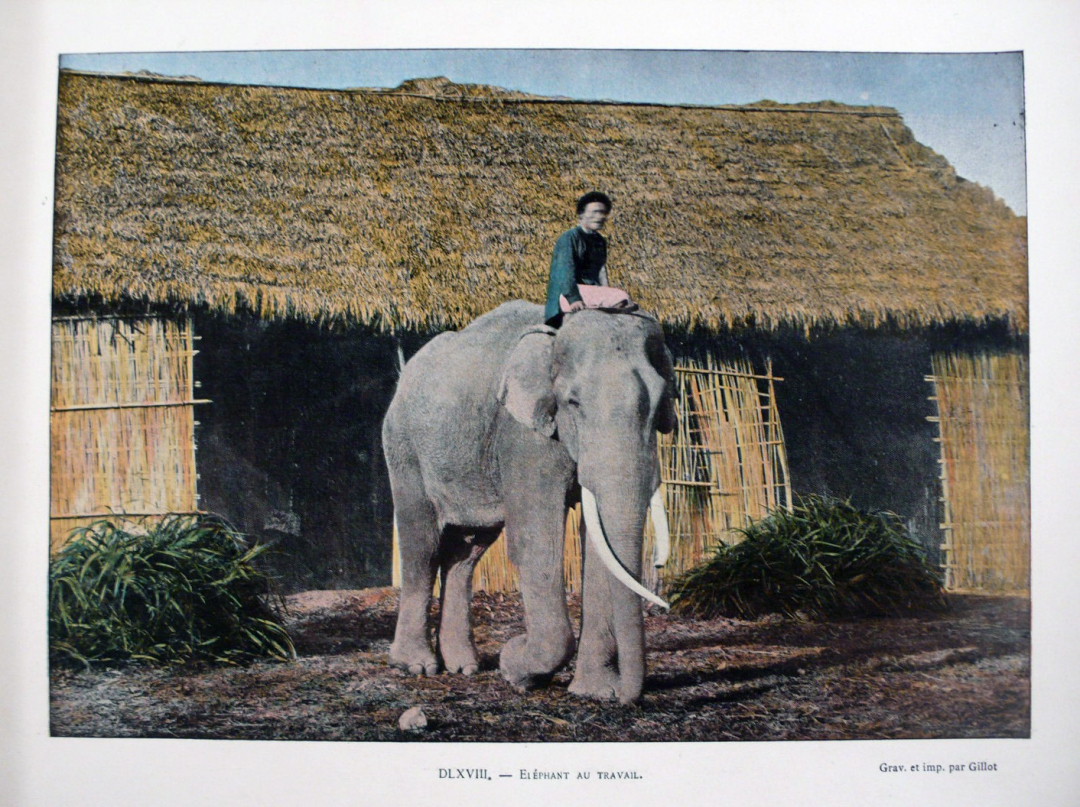 |
| Central Highlands domestic elephant. Photo: Charles Lemire |
Another color photo shows a rider sitting on the back of an elephant. The photo shows a strong male elephant with sharp, curved tusks, slightly pointing upwards, looking very majestic like the domestic elephants of the Central Highlands at that time. The photographer has colored it very reasonably, no different from a real painter, keeping the gray color of the elephant's body and the yellowish color of the bamboo panels and thatched roof in the background. On the subject of elephants, Charles Lemire has valuable documentary photos, typically the photo of two stone elephants at Do Ban citadel (Binh Dinh).
It is interesting that in Charles Lemire's photo collection there are images of the Central Highlands with strange and unique colors. His photos have been published in photo books, printed as postcards, and stored at the Musée de l'Homme in France. They are truly valuable in the treasure trove of documentary heritage, very necessary in the research of Cham culture and indigenous culture of the Central Highlands.
Tan Vinh
Source



![[Photo] General Secretary To Lam chairs a working session with the Central Internal Affairs Commission](https://vphoto.vietnam.vn/thumb/1200x675/vietnam/resource/IMAGE/2025/5/22/3b7790f499da45b2803d8ae253207ef1)
![[Photo] Prime Minister Pham Minh Chinh chairs the Government's special meeting on law-making in May](https://vphoto.vietnam.vn/thumb/1200x675/vietnam/resource/IMAGE/2025/5/22/1c880aae96fd4e0894abc47a46fe19ba)

![[Photo] Press delegation meeting to visit Truong Sa and DK1 Platform](https://vphoto.vietnam.vn/thumb/1200x675/vietnam/resource/IMAGE/2025/5/22/6b8d232877ec421a9e8187d83b9f8006)
![[Photo] Prime Minister Pham Minh Chinh chairs meeting on draft Resolution of National Assembly on International Financial Center in Vietnam](https://vphoto.vietnam.vn/thumb/1200x675/vietnam/resource/IMAGE/2025/5/22/d398664ff1a140629169ea5a24e1b4d0)


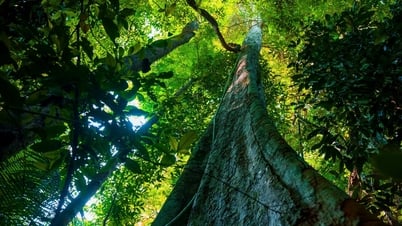

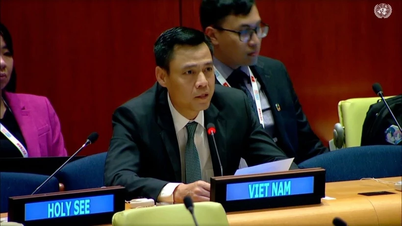


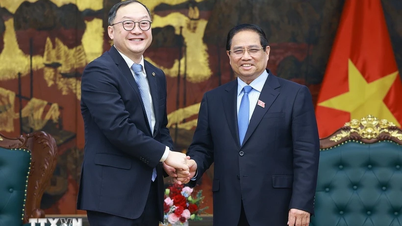
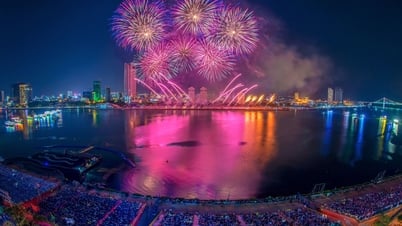


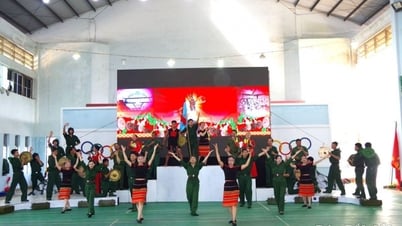
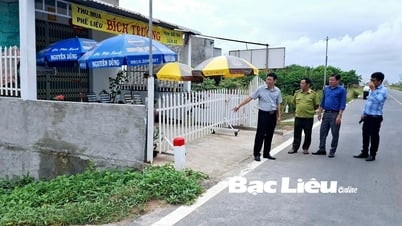

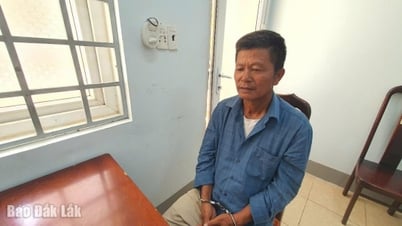







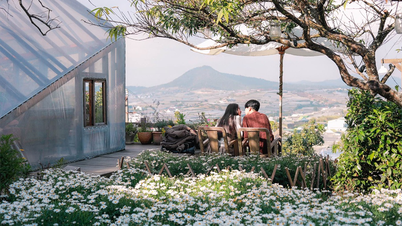
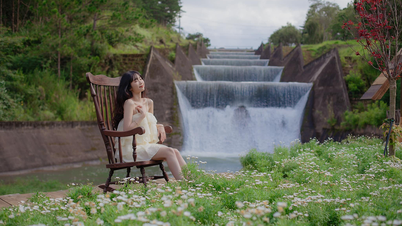
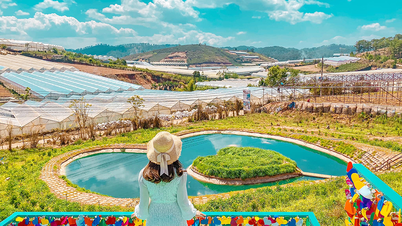
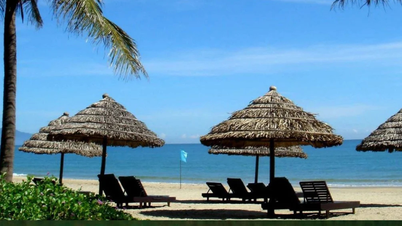







































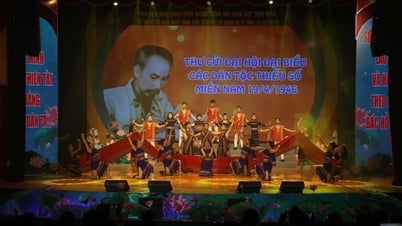






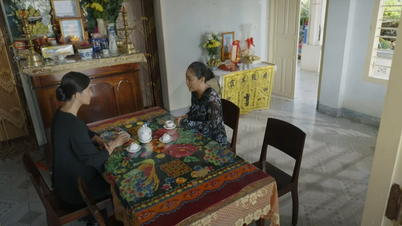





![[Podcast] Week introducing more than 500 OCOP products in Hanoi](https://vphoto.vietnam.vn/thumb/402x226/vietnam/resource/IMAGE/2025/5/22/d144aac2416744718388dbae3260e7fd)





Comment (0)